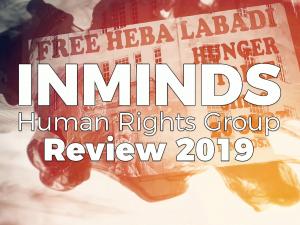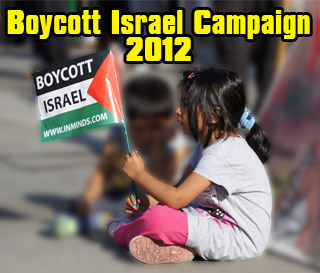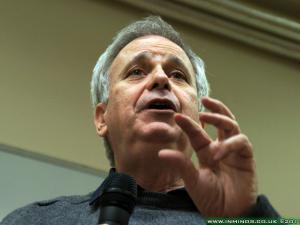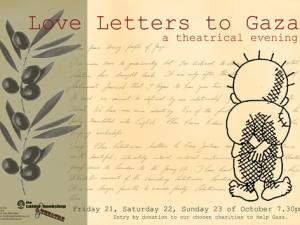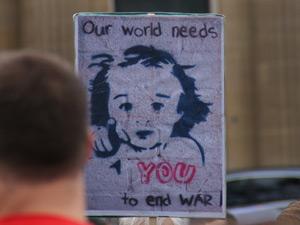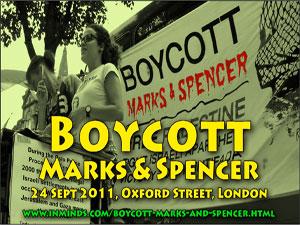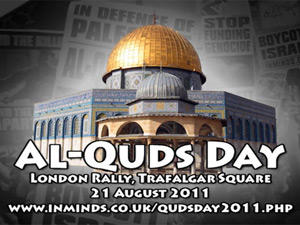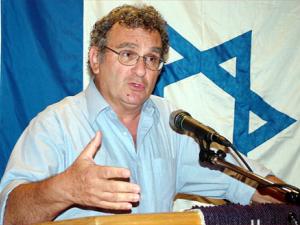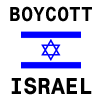
 Innovative Minds © 2014. All Rights Reserved. www.inminds.co.uk | ||||
British architects call for banning Israel from BiennaleAssaf Uni, Haaretz A British architects' association is calling on the 10th International Architecture Biennale in Venice to consider keeping an Israeli pavilion from participating in this year's exhibition, which opens Sunday. "We request that the Biennale Committee consider withdrawing the Israeli entry as being provocative and counterproductive to the aims of this Biennale, and particularly distasteful in the context of the aftermath of an ugly, unnecessary war and wanton destruction of neighboring Lebanon, and a continuing one-sided war in Gaza," the group Architects and Planners for Justice in Palestine wrote in a petition to exhibition organizers. The British organization also requested a contribution from the Palestinians, saying: "Whatever you do about the Israeli participation, we would like the organizers to consider asking for a Palestinian contribution, highlighting the historic and ongoing displacement of the Palestinian people." Meanwhile, the Palestinian Society of Architects has sent a similar letter to Biennale organizers, asking for the cancellation of the Israeli display. One of the reasons the group cites is that Israeli architects are "fully engaged" in a "system of oppression and control." As of press time, Biennale officials had not responded to the call to keep the Israelis out. The architecture exhibition - part of the Venice Biennale, which also includes other art forms - is the leading event in the architecture world, and lasts until November 19. The British group argues that the Israeli display serves propaganda purposes, and ignores the Palestinians' role as the primary victim of the conflict with Israel. The exhibit, called "Life Saver: Typology of Commemoration in Israel," focuses on the phenomenon of memorialization in Israel, and depicts 15 structures established in the memory of those who died in Israeli wars and the Holocaust. Israeli architect Tula Amir, who curated the project, writes: "Justification of Israel's wars provides legitimization of the blood that has been spilled and is liable to be spilled in the future." Jewish-British architect Abe Hayeem, who is behind the petition, uses Amir's words to explain why the exhibit should be withdrawn: It essentially justifies Israel's wars instead of criticizing them, he said. Amir, however, said the issue was addressed in the description accompanying the exhibit. Source: http://www.haaretz.com/hasen/spages/759163.html Letter to the Organizers of the 10th International Architecture Exhibition at the Venice Biennale5th September 2006
The Israeli participation is supported by the Israeli state, a state that continues against all International laws and UN resolutions to occupy the West Bank and Gaza Strip; to deny the right of return for Palestinian refugees; and to wage a daily war against Palestinian children, men and women, their homes and livelihoods. The Israeli state is still engaged in a war with Lebanon that started less than two months ago and resulted in the killing of over a thousand Lebanese, the destruction of infrastructure, roads, buildings, bridges, electricity power plants, and thousands of homes, and the denial of the right of education to thousands of Lebanese children who cannot attend a new school year because their schools have been destroyed. Israeli architects, engineers and planners are fully engaged in the planning and implementation of a system of oppression and control that began with the appropriation and confiscation of lands since 1948, and continues today in the West Bank and Gaza Strip in the form of illegal settlement building, bypass roads, and the construction of the Apartheid Wall. Nowhere in the exhibition is there any mention of the 418 Palestinian villages destroyed and wiped from memory as a result of the creation of the state of Israel; neither is there any recognition of the 750,000 Palestinians thrown out of their homes, who together with their children and grandchildren continue to be refugees unable to return to their homes until this day. The exhibition contains models of memorials commemorating both the victims of the Holocaust as well as those killed during Israel's various wars since 1948. The history of the holocaust and its Jewish victims is thus confused with that of Israel's colonial history and the death of soldiers killed while invading, occupying and annexing Arab lands. Tula Amir, the exhibition curator writes in the introduction to the exhibition: âThe justification of Israelâs wars legitimates the loss of life in the past and its possible loss in the future; the continuation of unconditional cooperation between the countryâs military and defense establishment and its individual citizens; and an unequivocal understanding that this struggle is the only means for Israelâs survival.â This paragraph can be read as a critique of this type of architecture; however, the fact that it is being displayed at this level little over a month after Israel has just gone through another one of its cycles of destruction is a celebration of it. The attempt to dissect it and analyze it in an abstract manner from an architectural point of view is not convincing. Nowhere in the quotations from the curator is the exhibition presented as a way to examine Israel's past or to try to learn from all its bloody history. The entire exhibition accentuates Israel as a victim state constantly under attack and in danger, so that wars can be justified and awarded legitimacy. The title "Life saver; typology of commemoration in Israel" only serves to emphasize this fact. It is inconceivable how the Venice Biennale, an international celebration of art and architecture, of civilization and the progress of humanity, can provide a venue for such a blatant justification for and commemoration of genocide, war and bloodshed. We therefore call upon you to cancel such an event, the inclusion of which will mark the entire Biennale.
Source: http://www.pacbi.org/boycott_news_more.php?id=356_0_1_0_C Petition To The Organizers 10Th International Architecture Biennale Venice - September 2006Architects & Planners for Justice in Palestine We are writing to express our dismay and concern that the Venice Biennale has agreed to host the Israeli contribution to the exhibition on the Architecture of Commemoration. The whole contribution, funded by the Israeli Government, totally excludes the Palestinians who are the target and real victims of the seemingly unending series of wars being memorialised, and awards Israel the sole position of victim and victor. The contributor Dan Daor says that the message of memorial structures is that "there are no heroes - all there is, is the eternity of Israel, all of the country is on the front, and all of us are victims." There are no memorials in Israel to the Nakba, the Palestinian tragedy of displacement and dispossession, where the intention of transfer and exclusion led to the destruction and elimination of 580 Palestinian villages towns and cities. Even today, this dispossession and humiliation goes on in Gaza and the West Bank, with the destruction of their heritage in the historic cities of Jerusalem, Nablus, Hebron, Bethlehem and Jericho. This is particularly ironic when the subject of the Biennale is architecture, cities and society. In the words of the Israeli curator Tula Amir: "Justification of Israel's wars provides legitimisation of the blood that has been spilled and is liable to be spilled in the future, of the continued unreserved co-operation between the military and security establishment and the citizens of the country, and of the undisputed consensus according to which struggle is the instrument of survival of our existence in Israel." But it has been evident that the wars and tragedies engulfing Palestine/Israel since 1948 have been due to Israel's intransigence and refusal to negotiate a peaceful resolution to the conflict. We request that the Biennale Committee consider withdrawing the Israeli entry as being provocative and counterproductive to the aims of the Biennale, and particularly distasteful in the context of the aftermath of an ugly and unnecessary war in neighbouring Lebanon, and a continuing one-sided war in Gaza. Whatever you do about the Israeli participation, we would like the organisers to consider asking for a Palestinian contribution, highlighting the historic and ongoing displacement of the Palestinian people. ARCHITECTS & PLANNERS FOR JUSTICE IN PALESTINE Ted Cullinan, Charles Jencks, Louis Hellman, Ian Martin, Jake Brown, Hans Haenlein, Abe Hayeem, Antoine Raffoul, Haifa Hammami, Eitan Bronstein (Zochrot), Mike Macrae, Neil Lambert, Steve Fox, John Waller, Michael Safier, Phil Gusack, Malkit Shoshan (FAST), Martin OâShea, Dr. Jim Berrow, John Murray, Paul Barham, Maria Jones, Mahmoud Zeena, Marco Capra, Osama Hamdan, Federico Malasardi, Claude Martel, Mustafa Chaudhary John Hodge, Beatriz C. Maturana, Daniella Bellelli, Christian Drinkwater, Kate Mackintosh, Stefano Ferrari, Su Mellersh-Lucas, Julian Rutt
Source: http://apjp.org/venice-biennale/ 'All of Israel is the front, and we are all victims'Esther Zandberg, Haaretz The exhibition "Life Saver: Typology of Commemoration in Israel," which represents Israel this year at the 10th International Architecture Biennale in Venice, focuses on architecture of commemoration and memory, which is conceivably the most charged and sensitive subject in the field. This is particularly true in Israel, which regrettably enjoys great expertise on the subject. Israel is the record holder for such sites, as commemoration is a primary component of the national ethos. The number of commemoration sites and memorials in Israel is considered the highest per-capita in the world. Now, new subjects for commemoration - the victims of the second Lebanon war - have been added to the circle. The exhibition, which opens on September 10 and closes November 19, was curated by architect Tula Amir, and will be exhibited in the Israeli pavilion of the Biennale at the Castello Giardini in Venice. The timing, before the echoes of the war even had a chance to die down, could not have been more symbolic or macabre. On the face of it, the timing is coincidental. But the subject was already chosen a year ago, and the concept was agreed upon and crystallized well before the war began. This said, commemoration and memory are never coincidental in Israel; they are actual and relevant at any given time. The exhibition itself makes no reference to the current war, another link in the vicious cycle of bereavement-commemoration-memory. Isn't it a given that this war should be referred to in an exhibition that deals with commemoration and memory? "The war is still fresh," says Amir. "It isn't possible to understand or assess this latest rupture, not socially. And of course not in terms of the architecture of commemoration. This is the first war in which I am the same age as the parents, a fact that adds a new layer to the pain and confusion and fear." Manipulation of consciousnessThe exhibition presents 15 commemoration and memorial structures that have been built throughout Israel in the 57 years between 1949 and 2006. Most of them have become architectural and cultural icons, compulsory stops for many Israelis and tourists alike. They have become a constituent element of the Israeli architectural 'export,' and are representative of the uniqueness of the commemoration phenomenon in Israel. As Amir puts it, this architecture is primarily based on the idea of "the double view": looking back at death, and looking ahead to the future; somewhere in the middle is the commemoration structure, which seeks to "exalt death and justify the cost." The double view, explains Amir, is the common denominator linking most commemoration structures in Israel - despite different architectural styles and changes that have taken place in memorial patterns over the years. This double view is represented in the memorial structures through a series of architectural contrasts: dark and light, open and closed, above and below, near and far. Nearly all of the commemoration structures, she notes, exploit more than one of these contrasts, providing the spectator with a sort of corrective experience. At times, the double view in memorial sites is created by positioning the inanimate architectural-sculptural object in front of a landscape, or against a background of vegetation, "which symbolizes life, growth and continuation," notes Amir. Numerous commemoration structures incorporate or guide the visitor to a viewing spot from which he or she is exposed to an especially panoramic scene that draws the gaze into the distance, "to the cause, or to the future." In this manner, architecture is enlisted to build "a foundation for legitimization of society's needs, justification for the difficulties of present-day existence and for the price to be paid in the future." Justification of Israel's wars, stresses Amir, "provides legitimization of the blood that has been spilled and is liable to be spilled in the future, of the continued unreserved cooperation between the military and security establishment and the citizens of the country, and of the undisputed consensus according to which struggle is the instrument of survival of our existence in Israel." These discordant words were written before the current war. The architectural representations of commemoration in Israel are unique in that they not only document an event or period in time, but mediate between past and present, and "give validity, in terms of place and architectural planning, to the existing myths and the dictates of society." Amir thinks of commemoration structures as "edge structures" - an extreme example of architectural symbolism and manipulation, in which the profession is called upon to shape consciousness to specific needs. At times, architecture even exploits the viewers' lack of defense, leading him or her, through its unique devices to the seemingly essential conclusion that was outlined in advance. Mini models of commemorationThe idea of contrasts is represented by a series of black and white reduced-scale models of the commemoration structures. The models are made of light plastic materials in contrast with the stone and concrete the structures themselves are generally constructed from. The exhibition will also offer a catalog of articles that analyze the complexity of the commemoration phenomenon in Israel. In an article about the Palmach House museum, Jewish-British architect Timothy Brittain-Catlin writes it is "in a sense the the first significant post-Zionist building, the one that has nothing stubborn or optimistic to say about the military enterprise." An article by Dan Daor conveys the same message about memorial structures, according to which there are no heroes - all there is is the eternity of Israel, all of the country is on the front, and all of us are victims. The Foreign and Education Ministries are jointly responsible for the Israeli pavilion at the Biennale. They have allocated $90,000 to the exhibition budget. The remaining funding was raised from private and public contributions and sponsorships. Amir was selected as the curator from among several candidates. In the final stage, the other contenders withdrew their candidacy, and Amir's proposal was selected. The Biennale, still considered the main institutional event in the international architecture world, is accompanied by a series of events and tributes. Foremost among them are the "Golden Lion" awards, which will be bestowed on the outstanding national pavilion, the outstanding city, and outstanding urban projects. This year, the prestigious architectural prize for lifetime achievement went to the veteran British architect Richard Rogers, one of the designers of the Pompidou Centre in Paris. The prizes will be awarded on the opening day of the exhibition. Source: http://www.haaretz.com/hasen/objects/pages/PrintArticleEn.jhtml?itemNo=753693
The Campaign For The Cancellation Of The Israeli ExhibitionSusannah Tarbush, Al-Hayat The 10th International Architecture Biennale in Venice - There is a growing international and Palestinian campaign for the organisers of the 10th International Architecture Biennale in Venice to cancel the exhibition in the Israeli pavilion. The Israeli exhibition is entitled "Life Saver: Typology of Commemoration in Israel." Fifty countries are participating in the Biennale, which runs from September 10 to November 19 and is one of the most important events on the international architectural calendar. Egypt is the only Arab country taking part in the Biennale, whose title is "Cities, architecture and society". The exhibits in the Israeli pavilion comprise plans, models and full architectural details of 15 memorials built between 1947 and 2006, some commemorating dead soldiers or intelligence officers, others the Holocaust. The Israeli Defence Ministry is at the top of the list of the organisations who gave "generous support" for the exhibition. The international pressure group Architects and Planners for Justice in Palestine (APJP) has sent a petition to the organisers of the Biennale saying it is "dismayed and concerned" that the Biennale agreed to host the Israeli contribution. APJP requests the Biennale Committee to consider withdrawing the Israeli entry as being "provocative and counterproductive to the aims of the Biennale, and particularly distasteful in the context of the aftermath of an ugly and unnecessary war in neighbouring Lebanon, and a continuing one-side war in Gaza." At the same time four Palestinian organisations have sent a joint letter to the organisers asking for the Israeli exhibition to be cancelled. The Palestinian organisations are the Palestinian Campaign for the Academic and Cultural Boycott of Israel (PACBI); the Palestinian Engineers Association - Jerusalem Center; the Society of Palestinian Architects; and RIWAQ - the Centre for Architectural Conservation. The four Palestinian organisations say: "It is inconceivable how the Venice Biennale, an international celebration of art and architecture, of civilization and the progress of humanity, can provide a venue for such a blatant justification for and commemoration of genocide, war and bloodshed." APJP says Israeli pavilion, funded by the Israeli government, "totally excludes the Palestinians who are the target and real victims of the seemingly unending series of wars being memorialised, and awards Israeli the sole position of victim and victor." It notes "there are no memorials in Israel to the Nakba, the Palestinian tragedy of displacement and dispossession where the intention of transfer and exclusion led to the destruction and elimination of 580 Palestinian villages, towns and cities." The 21 signatories of the APJP petition include Palestinian, Israeli and British/Jewish architects and also the eminent British architect Ted Cullinan, and the distinguished architectural critic and writer Charles Jencks. Their APJP petition quotes Dan Daor who writes in the exhibition catalogue that the message of memorial structures is that "there are no heroes - all there is, is the eternity of Israel, all of the country is the front, and all of us are victims." The letter from the four Palestinian organisations says the Israeli exhibition should be cancelled because it is supported by a state that continues against all international laws and UN resolutions to occupy the West Bank and Gaza, to deny the right of return for Palestinian refugees, and to wage a daily war against the Palestinian children, men and women their homes and livelihoods. The letter says that the Israeli state is still engaged in a war with Lebanon, "that has resulted in the killing of over 1,000 Lebanese, the destruction of infrastructure, roads, buildings, bridges, electricity power plants, and thousands of homes, and the denial of the right of education of thousands of Lebanese children who cannot attend a new school year because their schools have been destroyed." The Palestinian organisations note that the exhibition contains models of memorials commemorating both the victims of the Holocaust, and those killed in Israel's wars since 1948. "The history of the Holocaust and its Jewish victims is thus confused with that of Israel's colonial history and the death of soldiers killed while invading, occupying and annexing Arab lands." Both the APJP petition, and the letter from the four Palestinian organisations, strongly condemn the role of Israeli architects. The Palestinian organisations say: "Israeli architects, engineers and planners are fully engaged in the planning and implementation of a system of oppression and control that began with the appropriation and confiscation of lands since 1948, and continues today in the West Bank and Gaza Strip in the form of illegal settlements building, bypass roads and the construction of the Apartheid Wall." The APJP says that the "eminent Israeli architects" represented in the exhibition "are being used as tools of Israeli propaganda, and consequently would be deemed to be complicit in the agenda of excluding the Palestinian narrative." The APJP petition and the letter from the Palestinian organisations both quote the statement by the curator of the exhibition, Tula Amir, in her introduction to the exhibition. Amir writes: "The justification of Israel's wars legitimates the loss of life in the past and its possible loss in the future; the continuation of unconditional cooperation between the country's military and defense establishment and its individual citizens; and an unequivocal understanding that this struggle is the only means for Israel's survival." The Palestinian organisations say that while this paragraph can be read as a critique of this type of architecture, "the fact that it is being displayed at this level little over a month after Israel has just gone through another of its cycles of destruction is a celebration of it. The attempt to dissect it and analyse it in an abstract manner from an architectural point of view is not convincing." They add that "nowhere in the quotations from the curator is the exhibition presented as a way to examine Israel's past or to try to learn from all its bloody history. The entire exhibition accentuates Israel as "a victim state constantly under attack and in danger." While the title of the Biennale is "Cities, architecture and society," the theme is Cities of the Future, with the aim, the organisers say, of "presenting a manifesto for the cities of the 21st century. The Biennale has several sections. In the 300-metre long "Corderie dell'Arsenale" space, there are videos, photography, film and thee dimensional graphics presenting the urban experiences of 16 world cities in four continents, including Cairo, Istanbul, Barcelona, Caracas, Los Angeles and Mumbai. In addition, each of the 50 participating countries has its own pavilion. The content of the Israeli pavilion is in marked contrast to the pavilions of other countries, which look forward to cities of the future. To take just a few examples of how other countries exhibitions are approaching the theme of the exhibition, the exhibition in the US pavilion is entitled "After the Flood,: Building on Higher Ground", the UK exhibition explores the issues facing Britain's regional cities, the exhibition, the republic of Slovenia's pavilion has the title "Formula New Ljubljana", and the Romanian exhibition is entitled "Remix! Urban drama for nine cubes and many players." Source: http://english.daralhayat.com/culture/09-2006/Article-20060907-88012248-c0a8- 10ed-00c9-7dfde1856dc8/story.html
Related Items
Also Of InterestPage URL: http://www.inminds.co.uk/article.php?id=10073
|
|
Support Us
If you agree with our work then please support us.Campaigns INMINDS Facebook Live Feed Latest Video's
INMINDS Twitter Feed Tweets by @InmindsComFeatured Video's
You need Flash player 8+ and JavaScript enabled to view this video.
[all videos (over 200)..] Featured MP3 Podcast  During the holy month of Ramadan, as we move towards the Eid, I was going around Muslim shops in Tower Hamlets and elsewhere telling them that although they had collection boxes for the Mosque, although they had religious imagery in their shops, although they were selling dates to the faithful people to break their fast - the dates were made in Israel! They were stained with the blood of the Palestinian people! And Muslim shop keepers were selling them! Respect MP for Tower Hamlets Respect Youth Tower Hamlets, Feb 2008 [21min / 11Mb] [all podcasts..] Newsletter Feedback |
 |
 |




